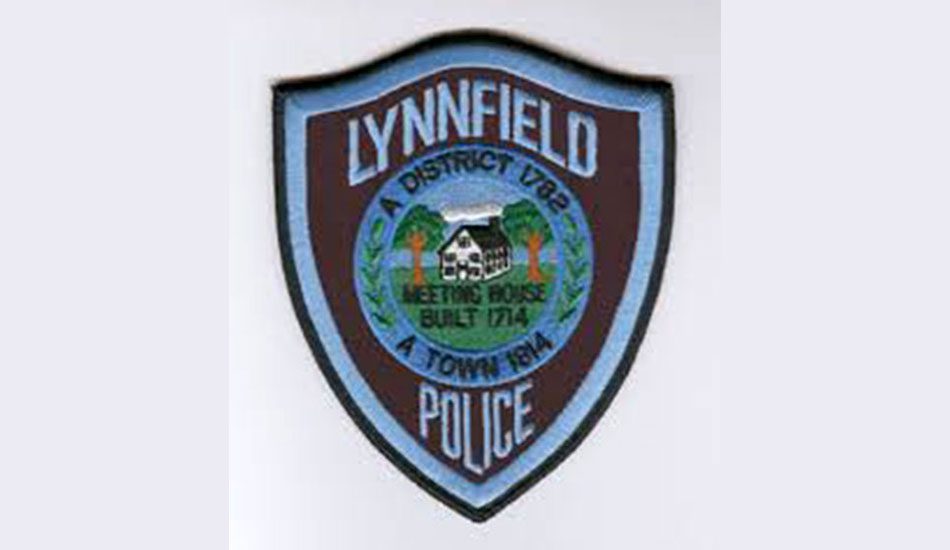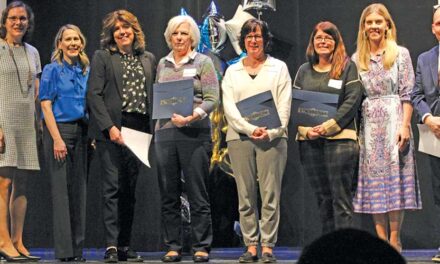By DAN TOMASELLO
LYNNFIELD — The Police Department is undertaking several initiatives that seek to crack down on speeding cars, Chief Nick Secatore said during the Select Board’s Dec. 6 meeting.
Town Administrator Rob Dolan said the town’s growth over the last 20 years, coupled with motorists using Lynnfield as a cut through in order to get to Route 1 and Route 95, has led to an increase in traffic and speeding. He said the Police Department has ramped up its traffic enforcement measures in order to address the problem.
“It won’t necessarily be in a punitive way, but in a way that will educate and protect pedestrians, children and the elderly,” said Dolan. “Modern technology will help with enforcement and public knowledge. We also want people who live here to take some responsibility and think about the way they are driving.”
Secatore said, “Speeding is one of the top five complaints the department receives.”
“When things started opening up around March, we began getting complaints from areas where we normally didn’t get complaints,” said Secatore. “We had money in the budget to get a radar speed signboard, which lets people know they are speeding. It also counts cars and gives us data.”
Secatore said the DPW has also erected 10 small signboards that inform people about the town’s various speed limits.
“We have had a number of complaints in the Main Street area, particularly at the Main and Lowell streets intersection and the upper Main Street area near the new Sagamore Place development,” said Secatore. “With the DPW’s assistance, we will be installing two more of those signboards at those locations. We believe that 16 signs are the correct amount for the town. We will place them on the major roadways. Technology is going to take us forward.”
Secatore said police patrolmen will also be located in strategic areas in order to remind motorists not to speed. He said the vast majority of motorists pulled over by police officers are not issued citations.
“We are not trying to punish people,” said Secatore. “We are trying to educate them. There are residents who are also being stopped.”
Secatore acknowledged that the Police Department has received complaints about speeding in certain areas that police officers have yet to enforce.
“We are not ignoring them,” said Secatore. “We have had more demand than we can get to. We are concerned about those areas, and we will enforce every area where we have gotten complaints. It’s just going to take us some time.”
Select Board Chairman Dick Dalton said traffic has been the number one complaint he has received from residents during his five-and-a-half years serving on the board.
“The flow of traffic on Main Street is not just residents,” said Dalton. “It’s people using Main Street in order to avoid Route 128. There is nothing we can do about that. We can’t build a wall, but we can at least educate people that if they are going to be in town, they have to follow the rules.”
Dalton also noted that the Police Department will be fully staffed for the first time in 10 years by the start of fiscal year 2023.
“In past years, the town hasn’t been able to do a real traffic enforcement program because the Police Department didn’t have the staffing,” said Dalton. “For the first time in 10 years, the Police Department will have a lot more resources than it did before.”
Dalton said 10 percent of the money issued from speeding tickets “goes back to the town’s coffers.”
“It is not a revenue-driven program,” said Dalton. “It’s an education and public safety program. We have received reports of pedestrians using crosswalks who have been ignored by drivers. There are communities such as Medford that have a strict traffic enforcement policy. I am very much aware of it as a driver when I am heading to my office in Cambridge. We would like to get to that point.”
Secatore agreed.
“No Lynnfield police officer writes a citation to get money,” said Secatore. “We don’t operate that way. The staffing is going to help us. Every one of our officers is on a shift and there is no dedicated traffic person. But when we get back to our maximum level of staffing of 22 officers, we will be in a good position to free up people, which we haven’t been able to do in a while.”
Dolan recalled that funds from the state’s Complete Streets program allowed the town to make crosswalk improvements and install signs in front of the elementary and middle schools. He said the DPW also redesigned the Summer and Walnut streets intersection last summer.
“It forces drivers to slow down in order to take that turn instead of having them take it on two wheels,” said Dolan about the revamped Summer and Walnut streets intersection. “We are applying for Complete Streets funds this spring in order to take a similar approach at the Main and South Common streets intersection. Pulling out that curb by the Old Burying Ground will force people to slow down and enter safely. Every capital project that we will do will seek to slow people down.”
Dolan also said speed monitoring systems will be included in the town’s fiscal year 2023 capital budget. He said the systems will not be able to identify drivers’ license plates.
“It just counts cars and calculates the date, time and speed,” added Secatore. “It gives us a lot of data, puts it in a table and lets us know what percentile we are at.”
Select Board member Phil Crawford said the signs that have been placed on Main Street and Walnut Street have made a difference.
“There is no doubt that it works,” said Crawford. “We have gotten the Walnut and Salem streets intersection under control. We had a police officer there pretty often, and it worked well. It’s heading in the right direction. And once the Police Department is fully staffed after the newest officer gets out of the academy, we can talk about adding someone as a dedicated officer.”
Select Board member Joe Connell said Secatore’s plan is moving the town “in the right direction.”
“I live off Walnut Street and the curb adjustment at the Summer and Walnut streets intersection has forced cars not to take that corner on two wheels,” said Connell.
Conservation Commission member Erin Hohmann urged the Police Department to increase traffic enforcement in the Salem Street area.
“I appreciate that we do have a plan in motion, but the Salem Street and Walnut Street area is an absolute nightmare,” said Hohmann. “I often hear people say it’s important to preserve the character of the town. The people who live between Walnut Street and the Wakefield line no longer have any quality of life. We have numerous truck depots on Kimball Lane and Audubon Road in Wakefield, and Salem Street is being used as a throughway for heavy vehicles. They are also going down Walnut Street all the time even though it is restricted to 2 ½ tons, and there is no enforcement there. There is no reason for any of these trucks to be using Salem Street.”
Hohmann said state law includes provisions that the town could implement in order to crack down on truck traffic. She plans on following up with the board and Secatore about different avenues the town can pursue.
“We are dealing with sensory overload from MarketStreet,” added Hohmann. “We hear everything and see everything. We have no buffer between the highway and us. We are dealing with the traffic from Route 95 and all the trucks that are headed into Wakefield. It’s dangerous. When I saw the digital signs going up, it was horrifying that Salem Street didn’t have any.”
Hohmann requested that a sound barrier be installed on Route 95 North by Salem Street and heavy vehicles be excluded from traveling on Salem Street.
“Salem Street is a dense neighborhood,” said Hohmann. “The trucks should be using Route 95 because it is very dangerous.”
Dalton thanked Hohmann for raising her concerns to the Select Board, Secatore and Dolan.
“I am very familiar with the situation,” said Dalton. “My friend Anthony Guerriero lives on Salem Street, and I have stood in his driveway and have seen the traffic. Salem Street is on the list.”





